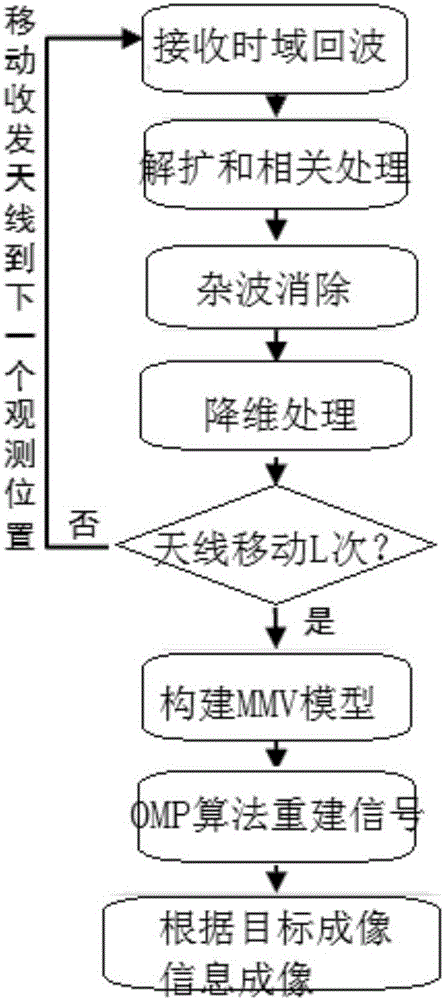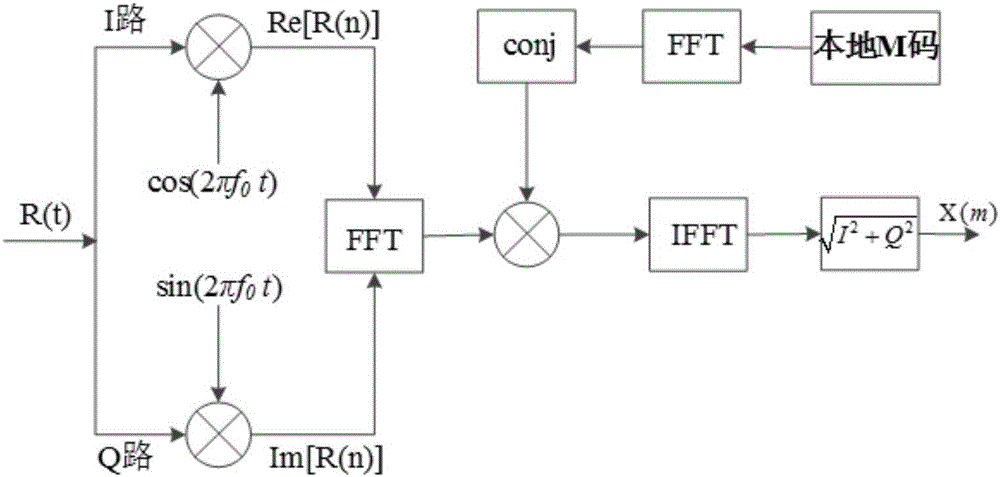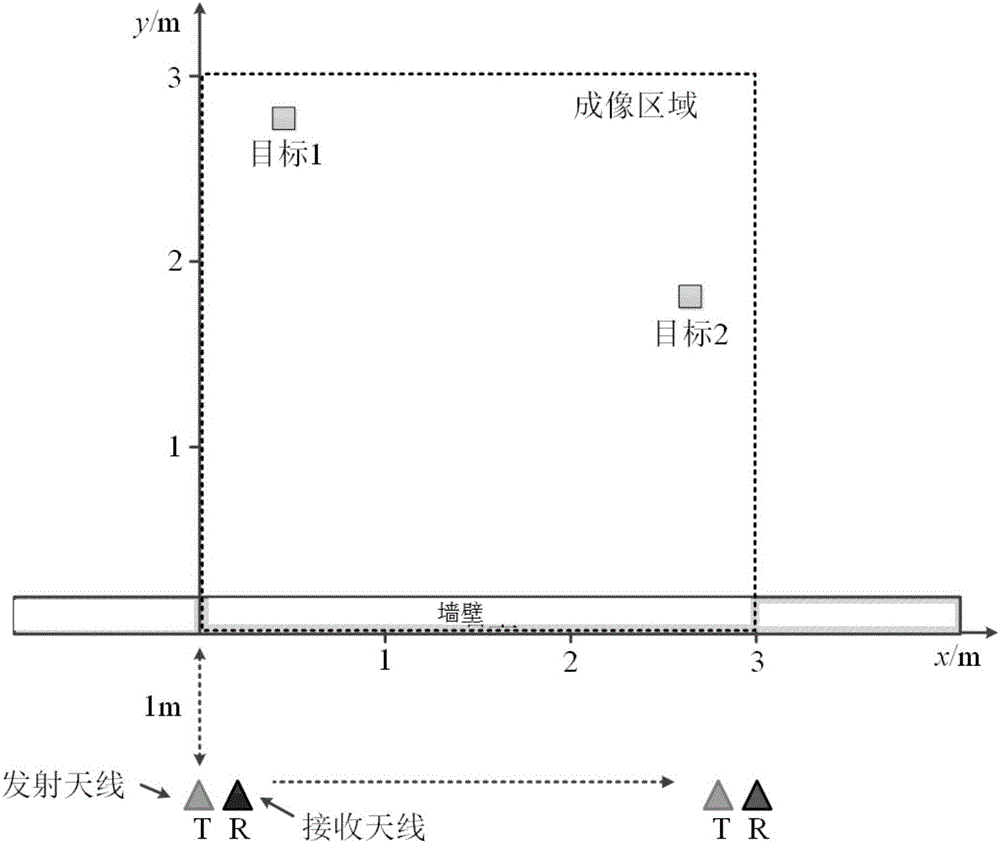Spread spectrum through-the-wall radar imaging method based on compression perception technology
A through-wall radar and compressed sensing technology, applied in the field of spread spectrum through-wall radar imaging, can solve the problems of large data storage space, long data recording time, and large number of observation antennas
- Summary
- Abstract
- Description
- Claims
- Application Information
AI Technical Summary
Problems solved by technology
Method used
Image
Examples
specific Embodiment
[0103] model such as image 3 As shown, the imaging area is a square area of 3m×3m, the wall is 20cm thick, its conductivity is 0.03, and its dielectric constant is 4.5. The transmitting antenna T is located at (0m,-1m), and the receiving antenna R is located at (0.2m, -1m), the two moved 57 times at an interval of 5cm, as all observation points. The transmitted signal is a pseudo-random continuous wave signal with a center frequency of 2GHz and a bandwidth of 2GHz. The M-sequence contains 1023 chips. ADC is 10Gsps, 16 bits. The SNR of the noise is 34dB.
[0104] The receiving antenna receives a set of time-domain echo information at the 20th observation position, such as Figure 5 As shown in , it can be seen that effective target information cannot be obtained from time domain information, and effective information can only be obtained after despreading and related processing, as shown in Figure 6 As shown, the amplitude values of the direct wave and the wall clutt...
PUM
 Login to View More
Login to View More Abstract
Description
Claims
Application Information
 Login to View More
Login to View More - R&D
- Intellectual Property
- Life Sciences
- Materials
- Tech Scout
- Unparalleled Data Quality
- Higher Quality Content
- 60% Fewer Hallucinations
Browse by: Latest US Patents, China's latest patents, Technical Efficacy Thesaurus, Application Domain, Technology Topic, Popular Technical Reports.
© 2025 PatSnap. All rights reserved.Legal|Privacy policy|Modern Slavery Act Transparency Statement|Sitemap|About US| Contact US: help@patsnap.com



